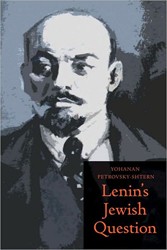Alyssa Quint focuses on the early years of the modern Yiddish theater, from roughly 1876 to 1883, through the works of one of its best-known and most colorful figures, Avrom Goldfaden. Goldfaden (né Goldenfaden, 1840 – 1908) was one of the first playwrights to stage a commercially viable Yiddish-language theater, first in Romania and then in Russia. Goldfaden’s work was rapidly disseminated in print and his plays were performed frequently for Jewish audiences. Sholem Aleichem considered him as a forger of a new language that “breathed the European spirit into our old jargon.” Quint uses Goldfaden’s theatrical works as a way to understand the social life of Jewish theater in Imperial Russia. Through a study of his libretti, she looks at the experiences of Russian Jewish actors, male and female, to explore connections between culture as artistic production and culture in the sense of broader social structures. Quint explores how Jewish actors who played Goldfaden’s work on stage absorbed the theater into their everyday lives. Goldfaden’s theater gives a rich view into the conduct, ideology, religion, and politics of Jews during an important moment in the history of late Imperial Russia.

The Rise of the Modern Yiddish Theater
Discussion Questions
The Rise of the Modern Yiddish Theater sheds important new light on the histories of both Yiddish culture and imperial Russia. Alyssa Quint offers a corrective account of the life and career of Avrom Goldfaden, the father of modern Yiddish theater, whose artistic merit was minimized by rivals and historians alike. Quint argues that Goldfaden was an important artist and theatrical entrepreneur who wrote for an urban middle class audience of Jews and non-Jews alike. Yiddish theater was remarkably broad in its appeal and adaptable in its content and form, she shows, and it developed in dynamic relationship with life off of the stage up until 1883, when it was banned by the czar. Goldfaden’s plays channeled live concerns about Jewish culture and integration, even as they encouraged new means of performance and self-fashioning in their audience. Drawing on diverse sources, Quint carefully reconstructs Goldfaden’s work and the vivid social world of competitors, actors, and audiences in which it was written and performed.

Help support the Jewish Book Council.



